Tracing Patterns
This is wood that was donated to our
scrollsaw club after it was used for a karate demo. These were 1 X 12 boards
that they broke for the demo.
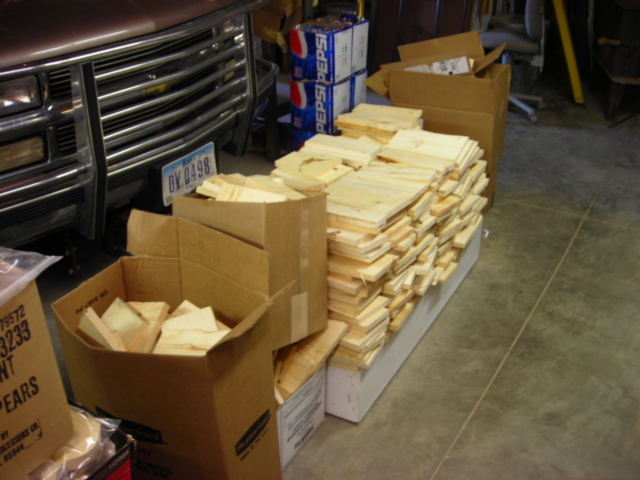
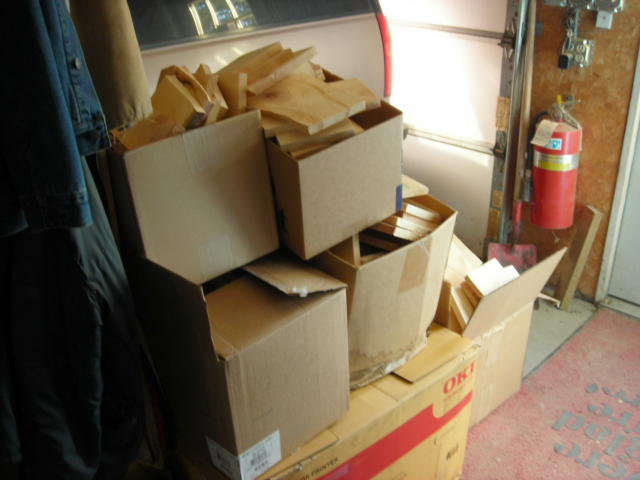
Our scrolling club decides to cut them into craft items to give to the local
handicap kids camp to use.
We made puzzles out of some.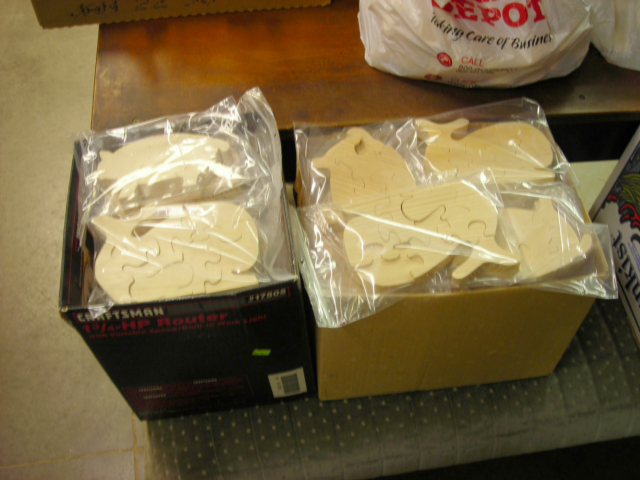
Some will be animals to glue together. 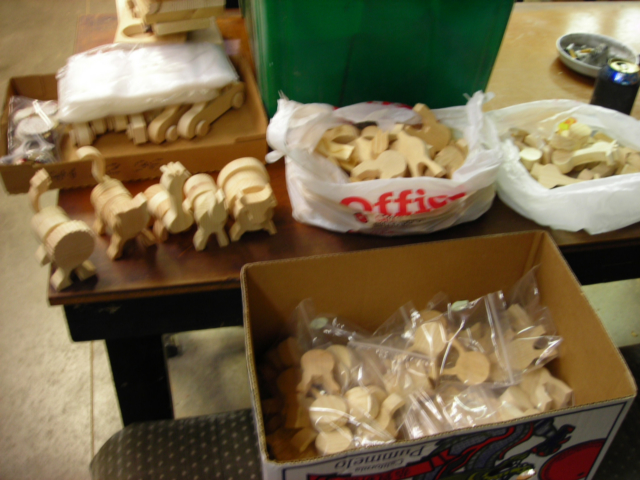
Some were to be cars.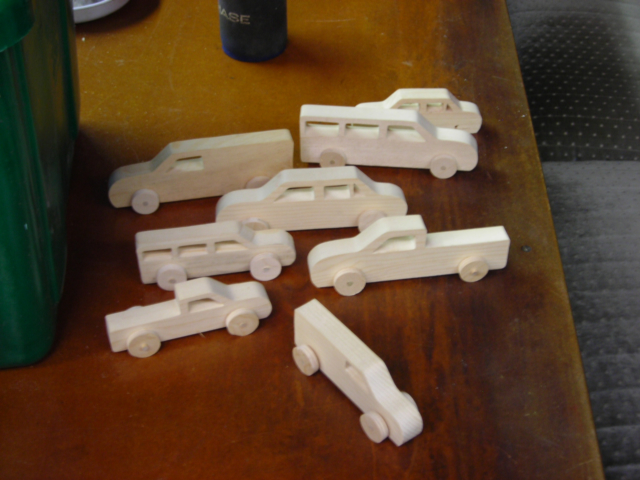
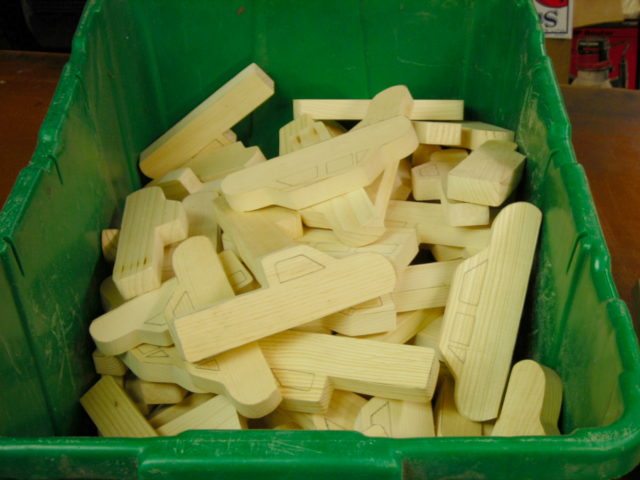
But where I see the problem is having people tracing without giving them a
little bit of instruction before hand. Here are some of the problems I found
after the first night of tracing.
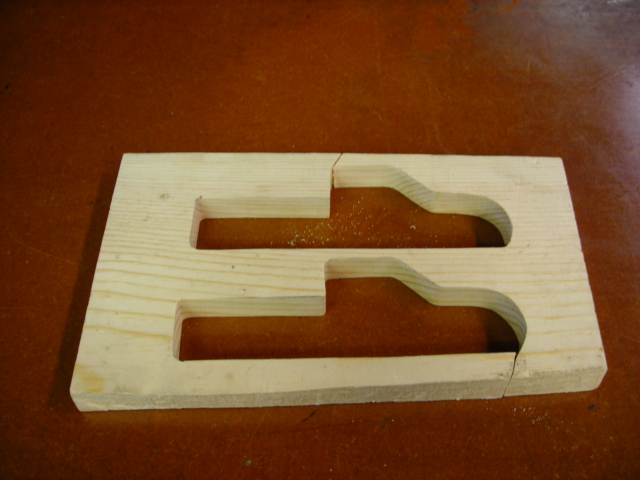
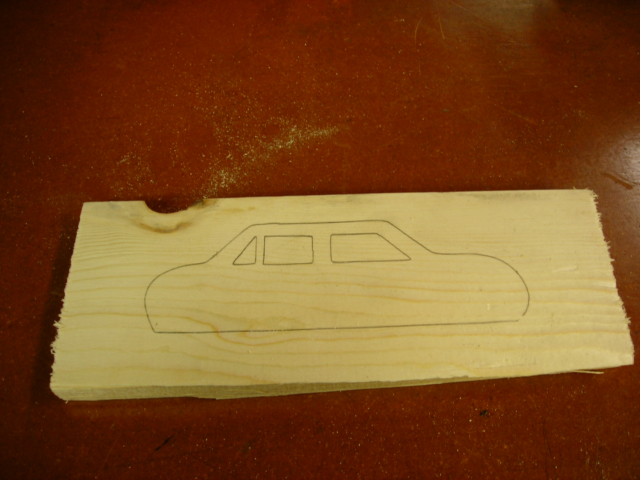
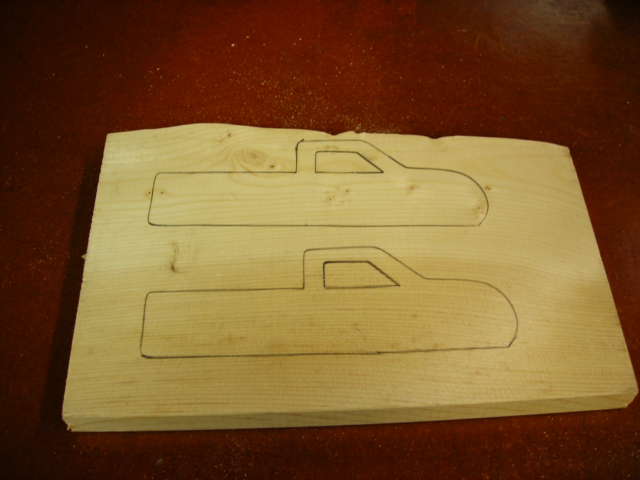 Traced
right in the middle of the board. Notice the entrance was on opposite sides of
the board to cut each one out. Also the truck is straight cut on the bottom so
it could have used the straight edge of the board for that side on one truck.
Could have moved the trucks to the right, within a 1/4" of the edge of the
board, and started the cut at the front bumper. On the second and 3rd one I need
to cut 1 1/2" just to get to the truck, could have been moved to within a
1/4" of the right edge of the board.
Traced
right in the middle of the board. Notice the entrance was on opposite sides of
the board to cut each one out. Also the truck is straight cut on the bottom so
it could have used the straight edge of the board for that side on one truck.
Could have moved the trucks to the right, within a 1/4" of the edge of the
board, and started the cut at the front bumper. On the second and 3rd one I need
to cut 1 1/2" just to get to the truck, could have been moved to within a
1/4" of the right edge of the board.
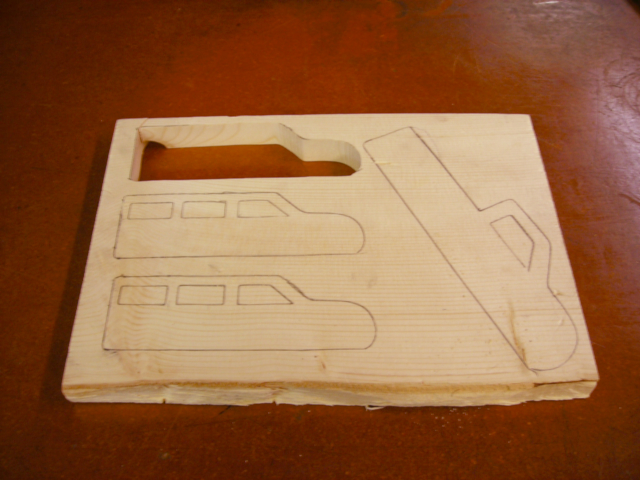
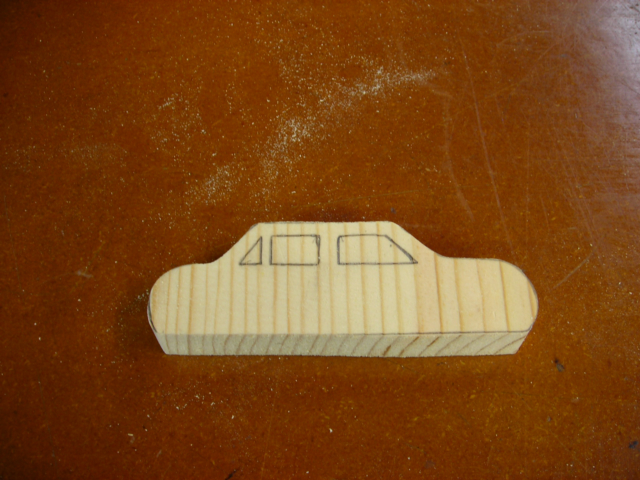 Should
not be cutting diagonal or across the grain.
Should
not be cutting diagonal or across the grain.
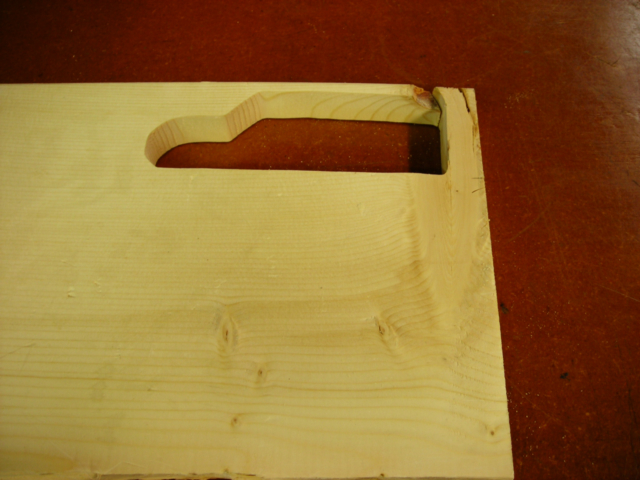 You need to
look at the back side of the board before deciding where to trace the pattern.
You need to
look at the back side of the board before deciding where to trace the pattern.
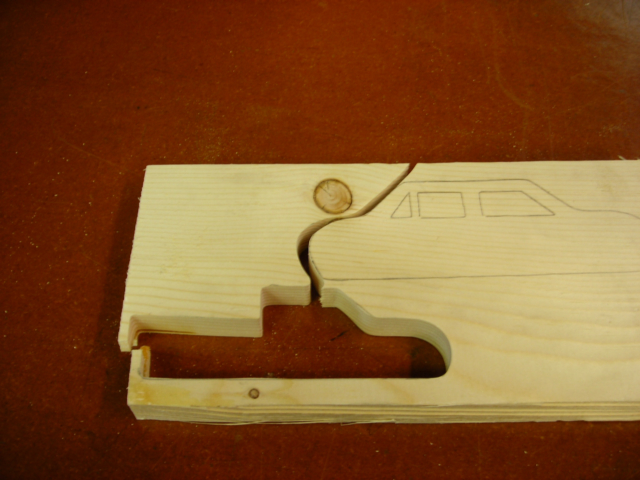
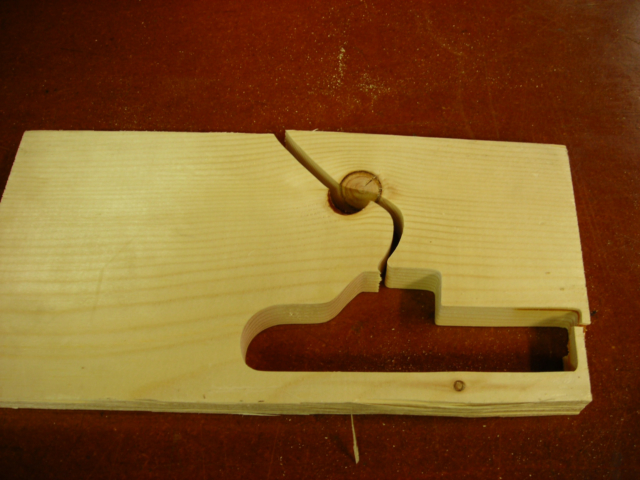
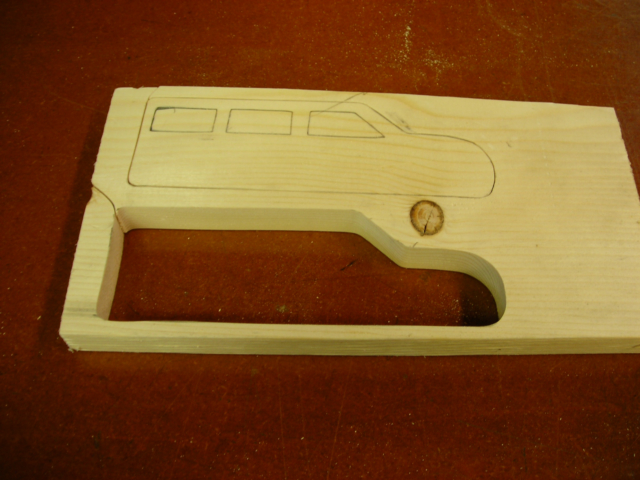
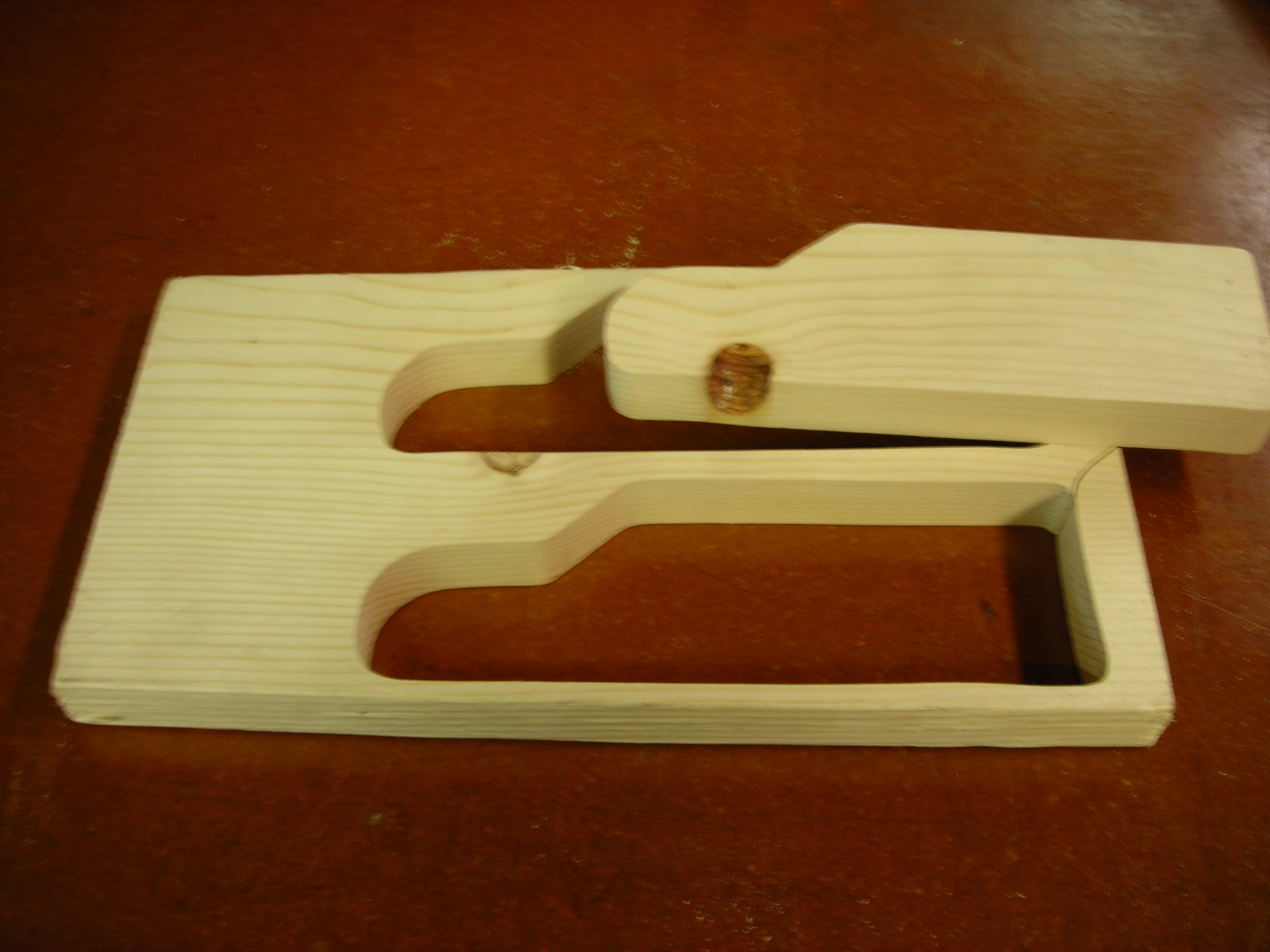
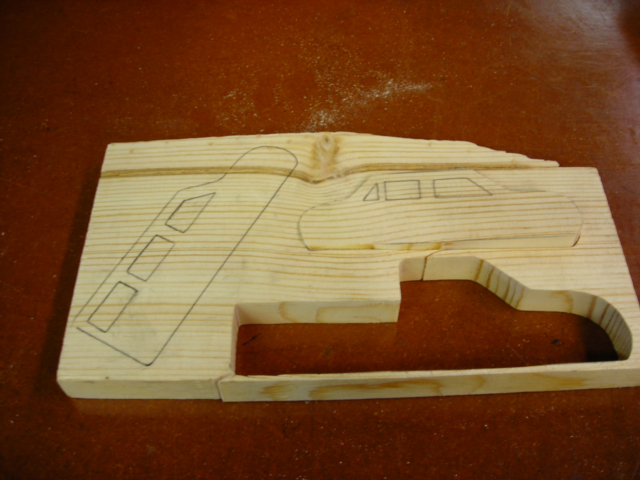
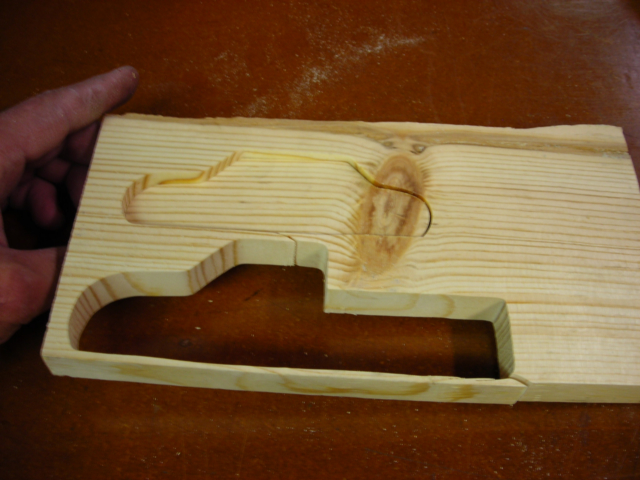
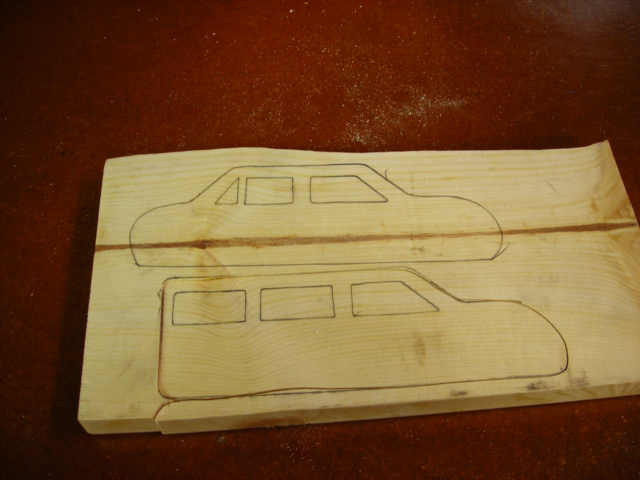
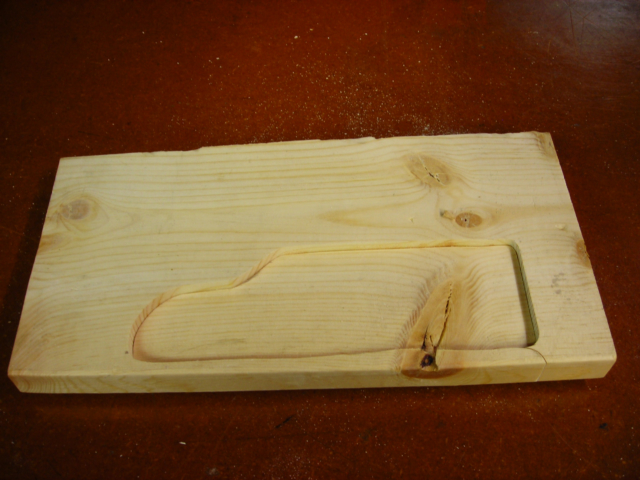
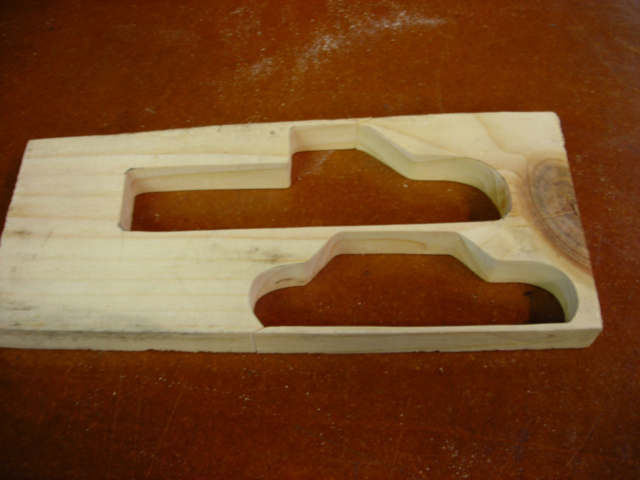 This one
is traced into the knot, yet the other end of the board is clear and will be
scrap for the fireplace.
This one
is traced into the knot, yet the other end of the board is clear and will be
scrap for the fireplace.
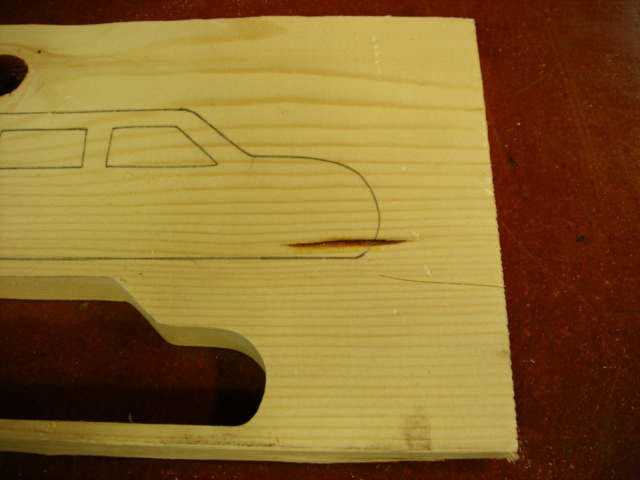 This one
has a sap pocket on the face, not even on the back side where it would be harder
to detect before cutting.
This one
has a sap pocket on the face, not even on the back side where it would be harder
to detect before cutting.
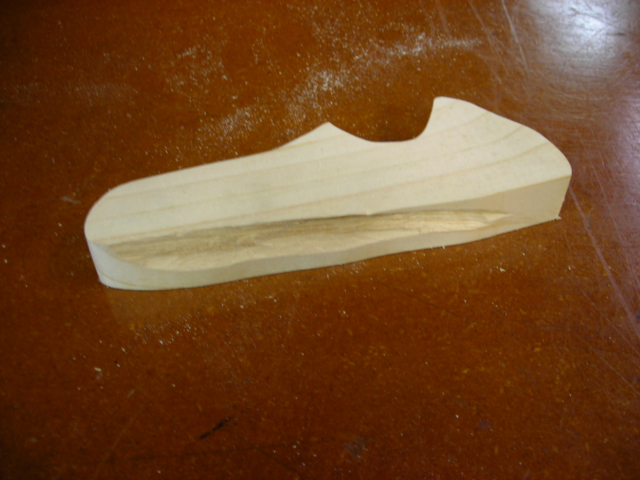 Traced too
close the the broken edge of the board. Remember these are karate board so that
have a broken edge on one side.
Traced too
close the the broken edge of the board. Remember these are karate board so that
have a broken edge on one side.
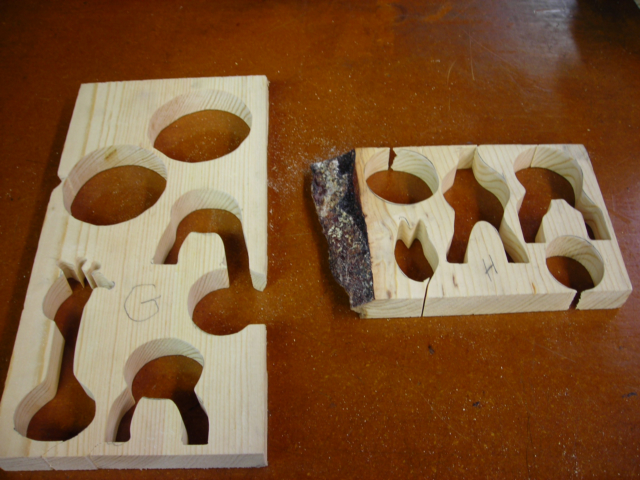 Here the parts on the left board
are spread out so far apart that it takes a lot of cutting the scrap just to get
to the part. The one on the right parts are closer to the edge or each other so
not a lot of wasted cutting is needed to get to the next part. You really don't
want the cut line touching the edge but within an 1/8" or 1/4" of the
edge or the next part..
Here the parts on the left board
are spread out so far apart that it takes a lot of cutting the scrap just to get
to the part. The one on the right parts are closer to the edge or each other so
not a lot of wasted cutting is needed to get to the next part. You really don't
want the cut line touching the edge but within an 1/8" or 1/4" of the
edge or the next part..








